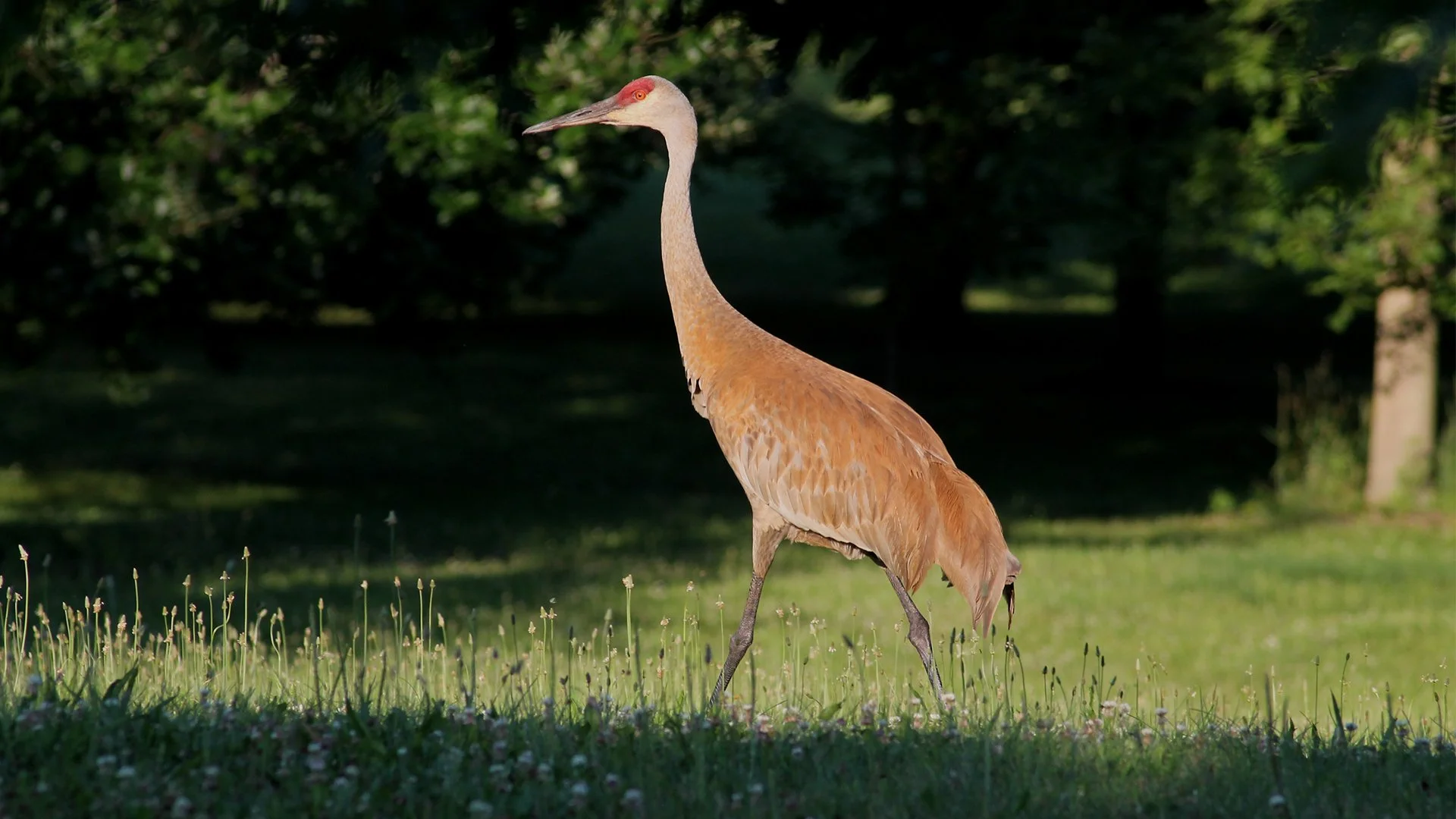Sandhill Cranes make great neighbors
Wisconsinites might be getting use to seeing Sandhill Cranes in Wisconsin.
But everytime I see one—more likely two because mating pairs tend to stick together— my eyes are drawn to the birds. More often than not, I just stop and gawk at them.
They’re huge, distinct animals and you can often find yourself quite close to them.
The cranes’ bodies are a stylish grey, while their heads feature a notable red forehead and white cheeks—Wisconsin’s state colors.
They can reach three to four feet in height, while their wings can stretch from about five to seven feet.
They’re interesting to watch pecking at the ground, doing mating dances (which I have yet to see), rearing their young, or trumpeting as they fly overhead with their long legs stretched behind them.
Their call can be heard long distances. At first listen, they sound a bit like geese. But you can tell they’re cranes because their sound suggests a rolled “r” in their throat. If you listen for it a few times, you’ll hear the distinction.
Of further interest, mated pairs do something called “unison calling.” Standing close together the female will make two calls for every one from the male.
I’ve traveled all over the world viewing animals.
I’ve seen the big five—the lion, leopard, rhinoceros, elephant, and Cape buffalo—in South Africa.
I’ve seen Kiwi in New Zealand, four types of monkeys in Costa Rica, and blue-footed boobies in the Galapagos Islands.
Yet, seeing Sandhill cranes in Wisconsin--my home sweet home--is one of my favorite wildlife experiences, especially when they’re congregating in preparation for migration to warmer areas to south.
Although there are hundreds of thousands of these migrating birds in North America, I consider myself lucky to see them so often here in Wisconsin. It wasn’t always so easy to see them.
Numbers were knocked way down when Europeans expanded across WIsconsin and the continent, pushing out species after species.
Thankfully, the conservation movement in the early 1900s fought for the cranes. Actions such as the Migratory Bird Treaty Act of 1916 helped.
The birds slowly recovered. And in the past few years, I would also say exploded in number.
Last fall I spoke with Ken Van Horn, a migratory bird expert with the Wisconsin Department of Natural Resources. I wanted to know if I was correct in the fact that I thought I was seeing more and more of the cranes around or if I was just starting to notice them more and more.
“If you look at count data in the last twenty years [the population] has gone up exponentially. You know we used to have a few here, a few there, and they have just really skyrocketed,” Van Horn told me.
And they’re more common in urban environments too. I see them regularly in many areas of the Madison city landscape. Heck, I’ve seen them walk right up to the front door of my apartment.
“They've pretty much occupied every niche they can,” Van Horn said.
I don’t know about you, but I’m happy to have Sandhill Cranes for neighbors.
When I see them fly over my head, I feel a sense of a pride and connection to my place in the world: Wisconsin, the Midwest, North America, Earth.
I love that feeling. And so I love the birds too.
CRAIG SAUER is a writer, communicator and former journalist living in Fitchburg, Wis.

